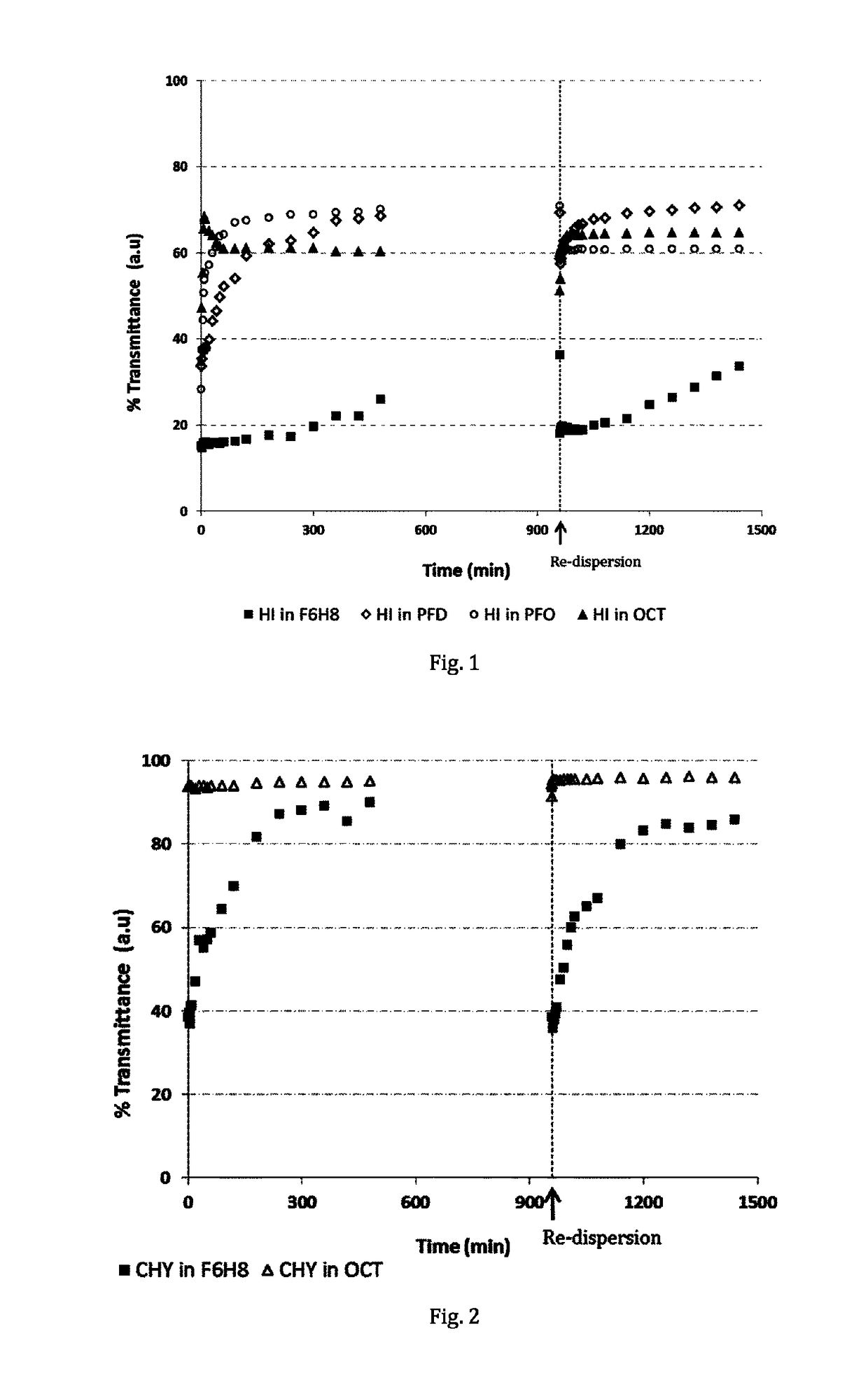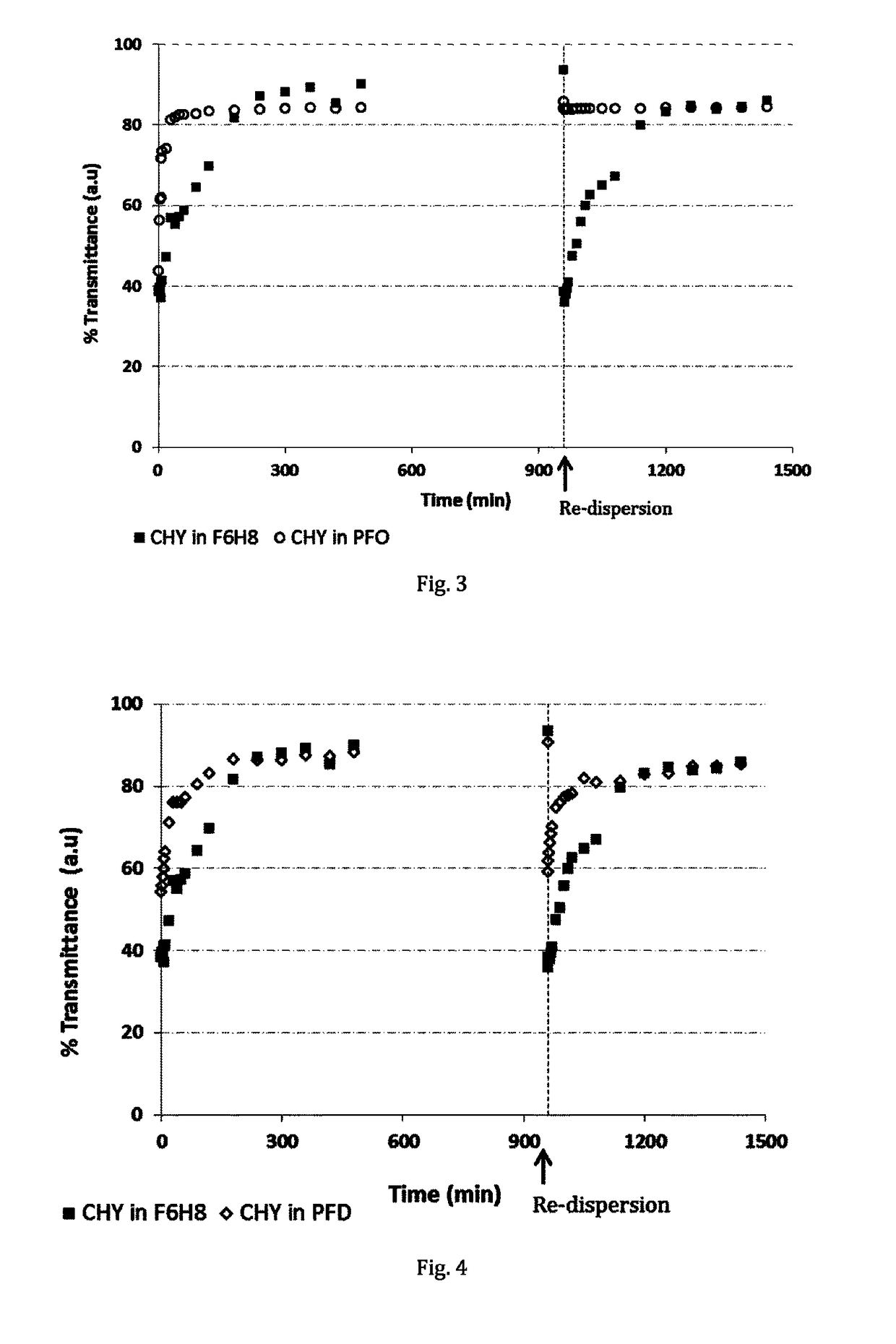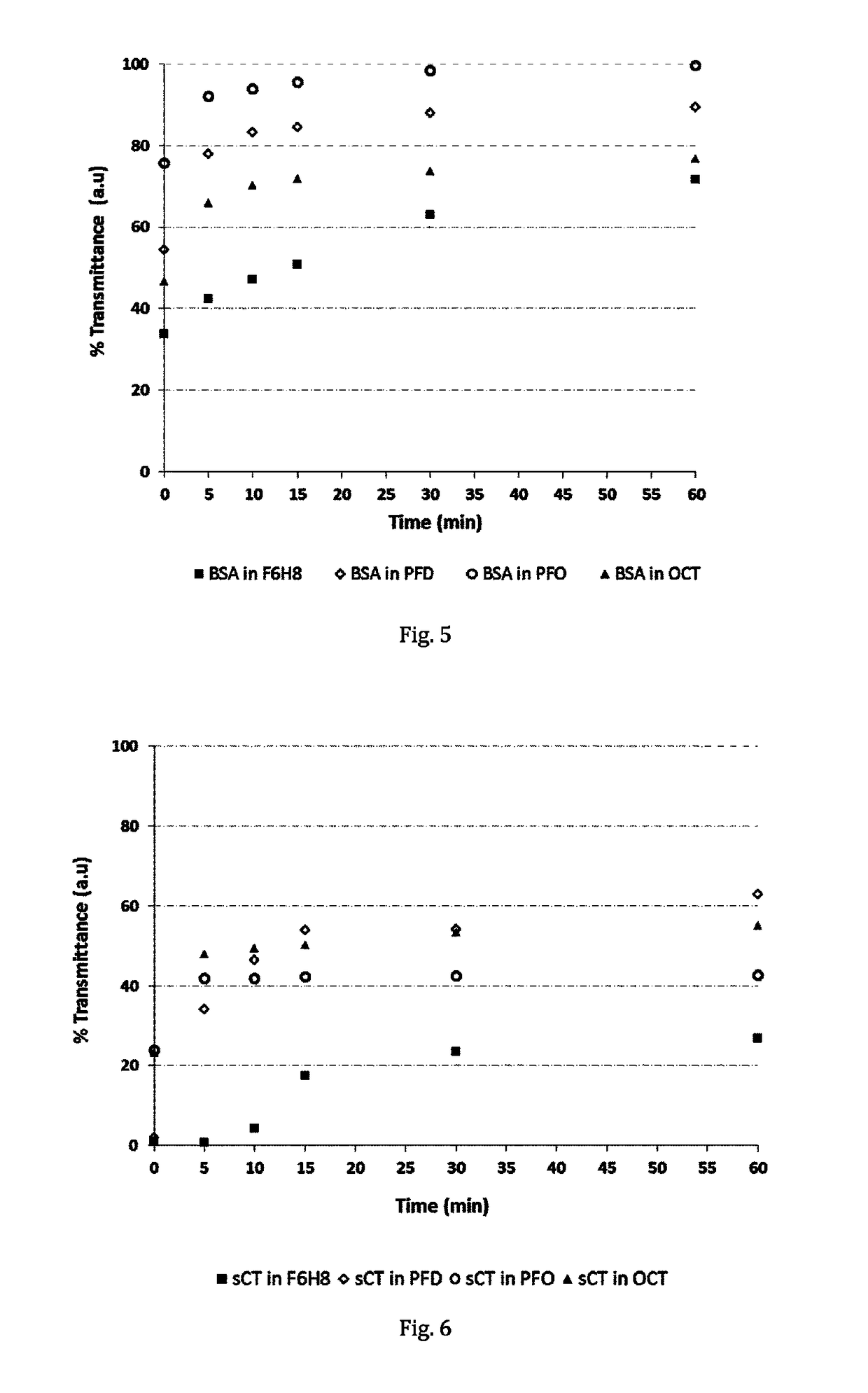Stabilised protein compositions based on semifluorinated alkanes
a technology of semifluorinated alkanes and protein compositions, which is applied in the field of protein compositions, can solve the problems of affecting the native fold structure of proteins, affecting the therapeutic effectiveness of proteins, and the method of many proteins and polypeptide therapeutics developed so far has been mostly restricted, so as to achieve the effect of re-dispersion
- Summary
- Abstract
- Description
- Claims
- Application Information
AI Technical Summary
Benefits of technology
Problems solved by technology
Method used
Image
Examples
example 1
tion of α-Chymotrypsinogen A
[0071]30 Vials with aliquots of lyophilised α-chymotrypsinogen A (CHY) were prepared from a stock solution of the protein. To each of 10 aliquots, 2.5 mL of potassium phosphate buffer (PPB, 50 mM, pH 8.0) were added, to each of another 10 aliquots, 2.5 mL of F6H8 were added. The remaining 10 vials served as controls. The vials were purged with nitrogen, gently shaken and stored at 50° C. At predetermined intervals, vials were drawn, their content extracted and analysed by circular dichroism and an enzymatic assay.
[0072]In result, it was found that the enzymatic activity of the samples stored in buffer was dramatically reduced already after a storage time of 1 day. Agglomeration was visible. In contrast, the SFA sample retained substantial enzymatic activity over a period of weeks. In fact, the bioactivity of CHY stored in F6H8 was very similar to that of the control vials. Table 1 shows the enzymatic activity in units / mL found for each tested sample.
[0073...
example 2
tion of Bovine Insulin
[0076]In result, it was found that insulin was highly unstable when stored in aqueous hydrochloric acid, but substantially stable at both temperature levels when stored in F6H8, regardless of whether the samples had been purged with nitrogen or oxygen. This was confirmed by both analytical methods. The results of the HPLC assay (in % of recovered insulin) are given in table 2 (storage at 37° C.) and table 3 (storage at 50° C.).
[0077]
TABLE 2Days of storageGasInsulin in HClInsulin in F6H8094.084.81Nitrogen86.289.31Oxygen95.192.522Nitrogen1.584.922Oxygen1.591.5
[0078]
TABLE 3Days of storageGasInsulin in HClInsulin in F6H8094.084.81Nitrogen1.187.91Oxygen2.288.816Nitrogen2.288.416Oxygen5.586.722Nitrogen2.595.422Oxygen2.792.3
example 3
Stability and Redispersibility of Human Insulin Suspensions
[0079]In this series of experiments, the physical stability and redispersibility of human insulin (HI) suspensions in an SFA and other non-aqueous liquids were evaluated. As mentioned, the degree of physical stability and in particular the redispersibility are important criteria which determine the suitability of a suspension medium e.g. for an injectable or topically pharmaceutical composition.
[0080]The retention of turbidity, of suspensions of human insulin (HI) in F6H8, perfluorodecalin (PFD), perfluorooctane (PFO), and octane (OCT) was determined photometrically by measuring transmittance at 350 nm at various time intervals over a total period of 24 hours (FIG. 1).
[0081]Human insulin (Sigma, 12643) was suspended in each of the liquids at a concentration of 0.91 mg / mL. The suspensions were vortexed for 3 seconds, then bath-sonicated in ice for 5 minutes. Immediately after sonication, the suspensions were transferred via p...
PUM
| Property | Measurement | Unit |
|---|---|---|
| molecular mass | aaaaa | aaaaa |
| molecular mass | aaaaa | aaaaa |
| size | aaaaa | aaaaa |
Abstract
Description
Claims
Application Information
 Login to View More
Login to View More - R&D
- Intellectual Property
- Life Sciences
- Materials
- Tech Scout
- Unparalleled Data Quality
- Higher Quality Content
- 60% Fewer Hallucinations
Browse by: Latest US Patents, China's latest patents, Technical Efficacy Thesaurus, Application Domain, Technology Topic, Popular Technical Reports.
© 2025 PatSnap. All rights reserved.Legal|Privacy policy|Modern Slavery Act Transparency Statement|Sitemap|About US| Contact US: help@patsnap.com



